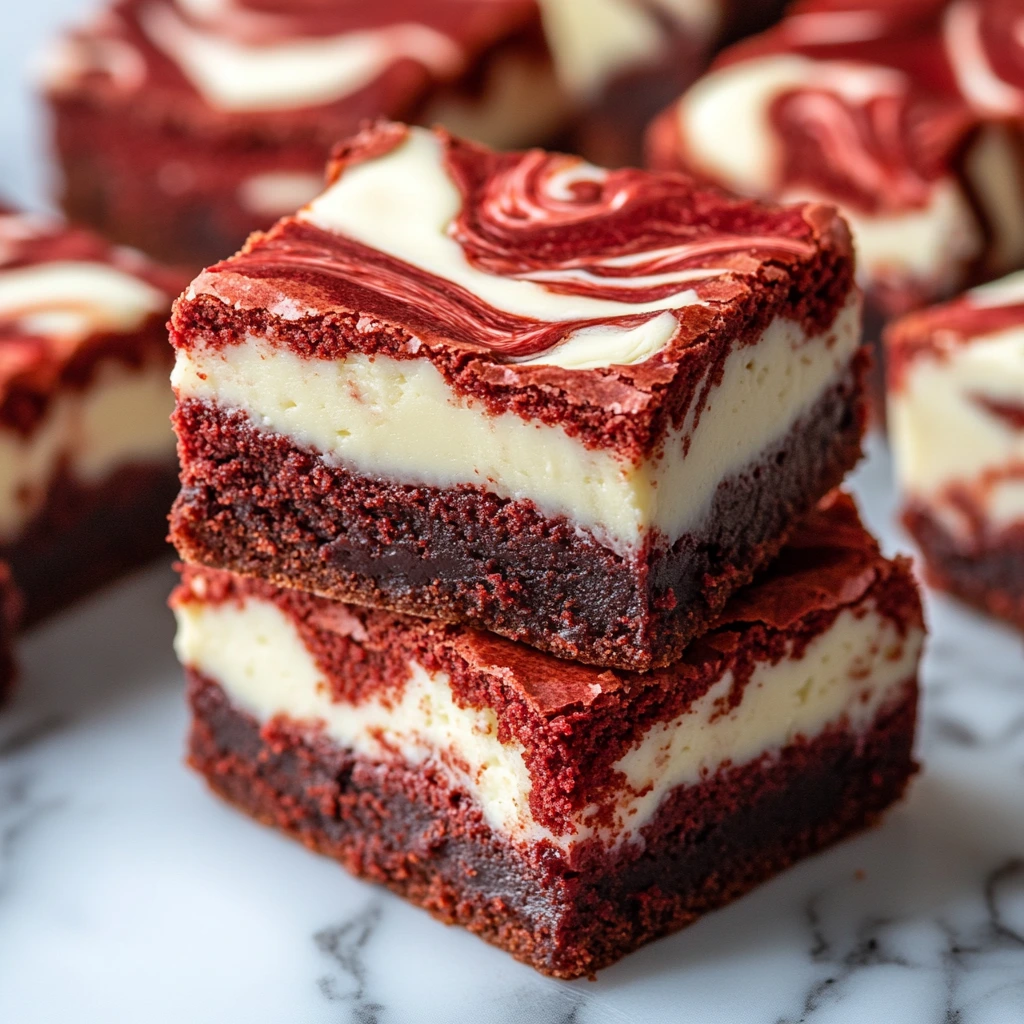Few pastries are as irresistible and indulgent as the Cheese Danish. With its flaky, buttery layers and rich, creamy filling, this beloved treat has earned its place in bakeries and breakfast tables around the world. Whether enjoyed with a cup of coffee in the morning or as an afternoon snack, the Cheese Danish offers the perfect balance of sweetness and texture.
What is a Cheese Danish?
A Cheese Danish is a type of Danish pastry, which is a laminated dough-based treat similar to croissants but with a slightly denser texture. It is traditionally filled with a sweetened cream cheese mixture, often enhanced with vanilla, lemon zest, or fruit preserves. While the classic version features a simple cream cheese filling, many variations include berries, nuts, or even savory ingredients like spinach and feta.
Why is Cheese Danish So Popular?
The Cheese Danish is a staple in bakeries, cafés, and coffee shops, particularly in the United States and Europe. Its popularity can be attributed to:
- Versatility: It can be enjoyed as breakfast, dessert, or a snack.
- Ease of preparation: While homemade versions require some effort, many people use store-bought puff pastry for a quick and delicious alternative.
- Pairing potential: It complements coffee, tea, and hot chocolate, making it a perfect companion for a relaxing morning or evening.
What to Expect in This Guide
In this article, we’ll explore the history of the Cheese Danish, ingredients, step-by-step recipes, common mistakes, and variations. Whether you’re a seasoned baker or a beginner, you’ll learn everything needed to create the perfect homemade Cheese Danish from scratch. Let’s dive in!
History of Cheese Danish
Origins of the Danish Pastry
The story of the Cheese Danish begins in Denmark, but its origins are surprisingly Austrian. In the 1850s, Danish bakers went on strike, leaving bakery owners in search of skilled workers. To keep their businesses running, they hired Austrian bakers, who brought with them the techniques of laminated dough—a method used in making croissants and puff pastries. Over time, Danish bakers modified these techniques, incorporating more butter and a slightly sweeter dough, giving birth to the wienerbrød, or “Viennese bread,” which later became known worldwide as Danish pastry.
The Birth of Cheese Danish
While traditional Danish pastries were often filled with fruit preserves, custard, or marzipan, the Cheese Danish emerged as a distinct variation, likely influenced by European cheesecake traditions. The introduction of cream cheese as a filling became popular in the United States, where Philadelphia cream cheese was widely available and favored for its smooth, tangy taste. By the early 20th century, Cheese Danish had become a bakery staple in both Europe and North America.
Rise to Popularity in the United States
Danish pastries gained widespread popularity in the United States in the early 1900s, thanks to waves of Scandinavian immigrants who brought their baking traditions with them. The Cheese Danish, in particular, became a coffee shop favorite, commonly found in delis, bakeries, and hotel breakfast buffets.
One of the biggest boosts to the Danish pastry’s fame came in the 1960s, when Denmark sent an official delegation of bakers to the White House. The Danish monarchy gifted President John F. Kennedy a selection of traditional Danish pastries, which helped further popularize the term “Danish” in American culture.
Cheese Danish Today
Today, the Cheese Danish is a global favorite, enjoyed in a variety of ways. While the classic version remains popular, modern variations include fruit-infused fillings, savory twists, and gluten-free or vegan adaptations. Whether homemade or store-bought, the Cheese Danish continues to be a beloved indulgence that combines the best of European baking traditions with American creativity.
What Makes a Cheese Danish Unique?
The Cheese Danish stands out among pastries due to its flaky texture, rich filling, and delicate sweetness. Unlike other breakfast pastries, it combines the buttery, laminated layers of Danish dough with a smooth, slightly tangy cream cheese filling, creating a perfect balance of flavors and textures. But what exactly makes a Cheese Danish so special?
1. The Laminated Dough: A Flaky, Buttery Base
Unlike standard bread or cake-like pastries, a Cheese Danish is made with laminated dough, a technique where butter is folded into the dough multiple times, creating thin, airy layers when baked. This technique, inspired by Viennese and French baking traditions, gives the Danish its signature crisp and tender texture—a cross between a croissant and a puff pastry.
2. The Creamy, Slightly Tangy Filling
The key ingredient that sets a Cheese Danish apart is its cheese filling. Made with cream cheese, sugar, vanilla, and sometimes a hint of lemon zest, the filling is smooth, rich, and slightly tangy, perfectly complementing the buttery pastry. Unlike fruit-filled or custard-based pastries, the cheese filling provides a velvety texture and mild sweetness without overpowering the pastry itself.
3. Sweet vs. Savory Versatility
While the classic Cheese Danish is sweet, its versatility allows for creative variations:
- Fruit Variations: Many bakers add blueberries, raspberries, or apricot preserves for extra flavor.
- Savory Twists: Some versions incorporate herbs, spinach, feta, or cheddar cheese for a delicious, non-sweet option.
4. The Irresistible Glaze or Topping
Many Cheese Danishes are finished with a light sugar glaze or a dusting of powdered sugar, adding an extra touch of sweetness. Others are topped with sliced almonds or streusel, enhancing both texture and visual appeal.
With its perfect combination of buttery crispness, creamy filling, and versatile flavors, the Cheese Danish remains a timeless bakery classic enjoyed worldwide.

Ingredients for a Classic Cheese Danish
A classic Cheese Danish requires just a few simple ingredients, but each plays an important role in creating the flaky, buttery pastry and rich, creamy filling. Whether making it from scratch or using store-bought puff pastry, the right ingredients will ensure a perfectly balanced, bakery-quality treat.
1. Ingredients for the Pastry Dough
Traditional Cheese Danish dough is a laminated yeast dough, similar to croissants, but many home bakers use puff pastry as a quick and easy alternative.
Homemade Danish Dough (For those making it from scratch):
- 2 ¼ teaspoons (1 packet) active dry yeast – Helps the dough rise and develop flavor.
- ¼ cup warm milk (110°F/45°C) – Activates the yeast.
- 2 tablespoons granulated sugar – Adds slight sweetness to the dough.
- 1 large egg – Provides structure and richness.
- 1 ¾ cups all-purpose flour – The base of the dough.
- ½ teaspoon salt – Enhances flavor.
- ½ cup unsalted butter (cold, for laminating) – Creates flaky layers.
(For a quick version, use store-bought puff pastry instead.)
2. Ingredients for the Cream Cheese Filling
The creamy, tangy filling is what makes a Cheese Danish distinctive and delicious.
- 8 oz (1 block) cream cheese, softened – The star ingredient, providing richness.
- ¼ cup granulated sugar – Sweetens the filling.
- 1 teaspoon vanilla extract – Adds depth of flavor.
- 1 egg yolk – Makes the filling smooth and creamy.
- ½ teaspoon lemon zest (optional) – Brightens the flavor.
3. Ingredients for the Glaze (Optional but Recommended)
A simple glaze adds a touch of sweetness and shine to the finished Danish.
- ½ cup powdered sugar
- 1–2 tablespoons milk or cream
- ½ teaspoon vanilla extract
4. Optional Toppings & Additions
- Fruit preserves (strawberry, raspberry, blueberry) – Adds a fruity contrast.
- Sliced almonds or streusel topping – For extra texture.
- Cinnamon or nutmeg – For added warmth in the filling.
Step-by-Step Recipe for Homemade Cheese Danish
Making a homemade Cheese Danish may seem intimidating, but with the right technique, you can create a flaky, buttery pastry with a creamy, tangy filling right in your own kitchen. Follow this step-by-step guide to achieve a bakery-quality Cheese Danish from scratch.
Step 1: Prepare the Danish Dough (If Using Homemade Dough)
-
Activate the Yeast:
- In a small bowl, mix ¼ cup warm milk (110°F/45°C) with 2 ¼ teaspoons active dry yeast and 1 tablespoon sugar.
- Let it sit for 5-10 minutes until it becomes foamy.
-
Make the Dough:
- In a large mixing bowl, combine the yeast mixture with 1 large egg, 1 ¾ cups all-purpose flour, ½ teaspoon salt, and 1 more tablespoon sugar.
- Mix until a soft dough forms.
- Knead for 5 minutes, then cover and refrigerate for 30 minutes.
-
Laminate the Dough (for Flaky Layers):
- Roll out the dough into a 10×10 inch square.
- Spread ½ cup cold unsalted butter over two-thirds of the dough.
- Fold it into thirds like a letter, roll it out, and fold again.
- Chill for 1 hour, repeating this process twice for extra flakiness.
(Alternatively, you can skip this step and use store-bought puff pastry.)
Step 2: Make the Cream Cheese Filling
-
In a bowl, beat together:
- 8 oz softened cream cheese
- ¼ cup granulated sugar
- 1 teaspoon vanilla extract
- 1 egg yolk
- ½ teaspoon lemon zest (optional)
-
Mix until smooth and creamy.
Step 3: Assemble the Danish
-
Roll Out the Dough:
- If using puff pastry, roll it into a 10×12-inch rectangle.
- Cut into squares or rectangles (for classic Danish shapes) or strips (for braiding).
-
Add the Filling:
- Spoon 1 tablespoon of cream cheese mixture into the center of each piece.
- For extra flavor, add a teaspoon of fruit preserves on top.
-
Shape the Pastry:
- Fold the corners over for a classic Danish shape.
- Twist strips into a braid for a fancier look.
-
Egg Wash:
- Brush the edges with a beaten egg mixed with 1 tablespoon milk for a golden crust.
Step 4: Bake to Perfection
- Preheat oven to 375°F (190°C).
- Place the pastries on a lined baking sheet, leaving space between them.
- Bake for 18-22 minutes, or until golden brown and puffed up.
Step 5: Add the Finishing Touches
-
Make a Glaze:
- Mix ½ cup powdered sugar with 1-2 tablespoons milk and ½ teaspoon vanilla extract.
- Drizzle over warm pastries.
-
Serve Warm & Enjoy!
Popular Variations of Cheese Danish
While the classic Cheese Danish is made with a sweet cream cheese filling, there are many delicious variations that add new flavors and textures. Here are some of the most popular ones:
1. Fruit-Filled Cheese Danish
Adding fruit enhances the sweetness and tartness, balancing the rich cream cheese filling. Some favorites include:
- Strawberry Cheese Danish – Fresh or preserved strawberries add a juicy contrast.
- Blueberry Cheese Danish – A classic combination that provides a burst of flavor.
- Raspberry or Mixed Berry Danish – Slightly tart and vibrant in color.
- Apple Cinnamon Danish – Perfect for fall, made with spiced apple slices.
2. Savory Cheese Danish
Not all Cheese Danishes have to be sweet! Savory versions are perfect for breakfast or brunch:
- Spinach and Feta Danish – A Mediterranean-inspired twist.
- Ham and Cheese Danish – A great balance of salty and creamy flavors.
- Garlic and Herb Cream Cheese Danish – Ideal as a side for soups or salads.
3. Vegan and Gluten-Free Alternatives
For those with dietary restrictions:
- Vegan Cheese Danish – Made with dairy-free cream cheese and plant-based butter.
- Gluten-Free Cheese Danish – Uses gluten-free flour blends or almond flour for a different texture.
4. Fancy Variations
- Nutella Cheese Danish – A chocolatey twist on the original.
- Pumpkin Spice Danish – A fall favorite with spiced cream cheese.
- Almond Cream Cheese Danish – Topped with slivered almonds for extra crunch.

How to Serve and Store Cheese Danish
How to Serve Cheese Danish
- Warm: Cheese Danish tastes best when slightly warm, allowing the pastry to be flaky and the filling to be soft and creamy.
- With Coffee or Tea: A perfect pairing for breakfast or an afternoon snack.
- Topped with Powdered Sugar or Glaze: A simple sugar glaze or a dusting of powdered sugar enhances sweetness.
- With Fresh Fruit or Whipped Cream: Adds extra indulgence.
How to Store Cheese Danish
1. Room Temperature (Short-Term Storage)
- If planning to eat within 1-2 days, store in an airtight container at room temperature.
- Keep in a cool, dry place to prevent sogginess.
2. Refrigeration (Longer Freshness)
- Store in an airtight container in the fridge for up to 5 days.
- Before serving, reheat in the oven at 300°F (150°C) for 5-7 minutes to restore crispness.
3. Freezing for Later
- Cheese Danish freezes well! Wrap individual pastries in plastic wrap and place them in a freezer-safe bag.
- Store for up to 3 months.
- To reheat: Bake frozen pastries at 350°F (175°C) for 10-12 minutes.
Common Mistakes When Making Cheese Danish
Even experienced bakers can run into problems when making Cheese Danish. Here are some common mistakes and how to avoid them:
1. Using the Wrong Dough
- Mistake: Using regular bread dough instead of laminated dough (puff pastry or Danish dough).
- Fix: Use store-bought puff pastry for an easy option or make Danish dough for authentic texture.
2. Overloading the Filling
- Mistake: Adding too much cream cheese filling, causing it to leak out during baking.
- Fix: Use about 1 tablespoon of filling per Danish to prevent overflow.
3. Not Sealing the Edges Properly
- Mistake: Leaving gaps or not pressing the dough edges together.
- Fix: Lightly pinch or press the edges to keep the filling contained.
4. Baking at the Wrong Temperature
- Mistake: Baking at a temperature that is too low results in a dense, undercooked Danish.
- Fix: Always bake at 375-400°F (190-200°C) for a golden, crispy texture.
5. Using Cold or Overworked Dough
- Mistake: Rolling out cold dough makes it crack, while overworked dough loses its flakiness.
- Fix: Let dough rest at room temperature for 10-15 minutes before rolling.
FAQs About Cheese Danish
1. What is the difference between a Danish and a croissant?
A Danish uses a yeast-based laminated dough, while a croissant is flakier and less sweet. Danishes often have fillings (cheese, fruit, custard), while croissants are typically plain or chocolate-filled.
2. Can I use store-bought puff pastry for Cheese Danish?
Yes! Puff pastry is a quick and easy substitute that still gives a flaky, buttery texture. It won’t be as rich as traditional Danish dough, but it’s a great time-saver.
3. Why is my Cheese Danish soggy?
- Too much filling can make it soggy.
- Undercooking or storing improperly can also cause sogginess.
- Fix: Use less filling, bake until golden brown, and store in a dry, airtight container.
4. How do I make a healthier version of Cheese Danish?
- Use low-fat cream cheese.
- Reduce sugar in the filling.
- Use whole wheat or almond flour for the dough.
- Try sugar-free glaze using monk fruit or stevia.
5. Can I make Cheese Danish ahead of time?
Yes! You can prepare the dough and filling a day in advance, store them separately, and assemble before baking. Alternatively, freeze unbaked Danishes and bake when needed.
Conclusion
The Cheese Danish is a classic pastry that continues to delight people worldwide. With its flaky, buttery layers and rich cream cheese filling, it’s a perfect treat for breakfast, brunch, or dessert. Whether you prefer a traditional recipe or a unique variation, there’s a Cheese Danish to suit every taste.
Making a homemade Cheese Danish may take a little effort, but the results are well worth it. By following the right techniques, using quality ingredients, and avoiding common mistakes, you can create a bakery-quality pastry in your own kitchen.
For those short on time, using store-bought puff pastry is a quick and easy alternative. And with proper storage tips, you can keep your Cheese Danish fresh for days or even freeze it for later enjoyment.
Now that you know everything about making a perfect Cheese Danish, it’s time to get baking! Whether you go for the classic version or experiment with flavors, your homemade Danish will be a crowd-pleaser every time.
Print
Cheese Danish
Description
The Cheese Danish is a buttery, flaky pastry filled with a sweet and creamy cream cheese mixture. This popular European-inspired pastry is a staple in bakeries, coffee shops, and breakfast tables worldwide. Whether made from scratch with laminated Danish dough or using store-bought puff pastry for a quick version, this treat delivers the perfect balance of crispness, richness, and mild sweetness.
Perfect for breakfast, brunch, or dessert, the Cheese Danish can be enjoyed on its own or with fruit fillings, nuts, or glazes for extra flavor. With its golden brown, crisp layers and smooth, tangy filling, it’s no wonder this pastry is a favorite among pastry lovers.
Ingredients
- 8 ounces cream cheese, softened
- ¼ cup granulated sugar
- 1 sheet puff pastry, thawed if frozen
- 1 egg
- 1 tablespoon water
Instructions
- Preheat oven to 425°F and line a baking sheet with parchment paper.
- In a small bowl, beat together cream cheese and sugar until smooth.
- Unroll puff pastry and, if needed, use a rolling pin to gently roll out to a rectangle approximately 9×13 inches. Cut pastry into 8 rectangles.
- Transfer the rectangles to the prepared baking sheet, leaving some space between. (You might need two baking sheets.) Using a paring knife, score a smaller rectangle inside each piece of dough, leaving a ½-inch border all around. Be careful to not cut all the way through the dough.
- Spread about 2 tablespoons of the cream cheese mixture onto each smaller rectangle. Beat together egg and water, then use a pastry brush or paper towel to brush the egg wash on the uncovered pastry edges.
- Bake for 12-15 minutes, until puffed and golden brown. Let cool slightly before serving.
Notes
- Dough Choice: For an authentic Danish texture, use homemade laminated dough. However, store-bought puff pastry is a great shortcut without sacrificing too much flakiness.
- Don’t Overfill: Adding too much cream cheese filling can cause it to leak out while baking. Stick to 1-2 tablespoons per pastry.
- Sealing is Key: To prevent the filling from spilling, seal the edges properly or use a shaping method that keeps it contained.
- Egg Wash for Shine: Brushing with an egg wash (egg + milk or water) before baking ensures a golden, glossy crust.
- Baking Temperature: Bake at 375°F-400°F (190°C-200°C) for the best results—this allows the pastry to rise and crisp up beautifully.
- Flavor Enhancements: Add lemon zest, vanilla extract, or cinnamon to the filling for extra depth of flavor.
- Storage: Keep at room temperature for 1-2 days, refrigerate for up to 5 days, or freeze for up to 3 months.











